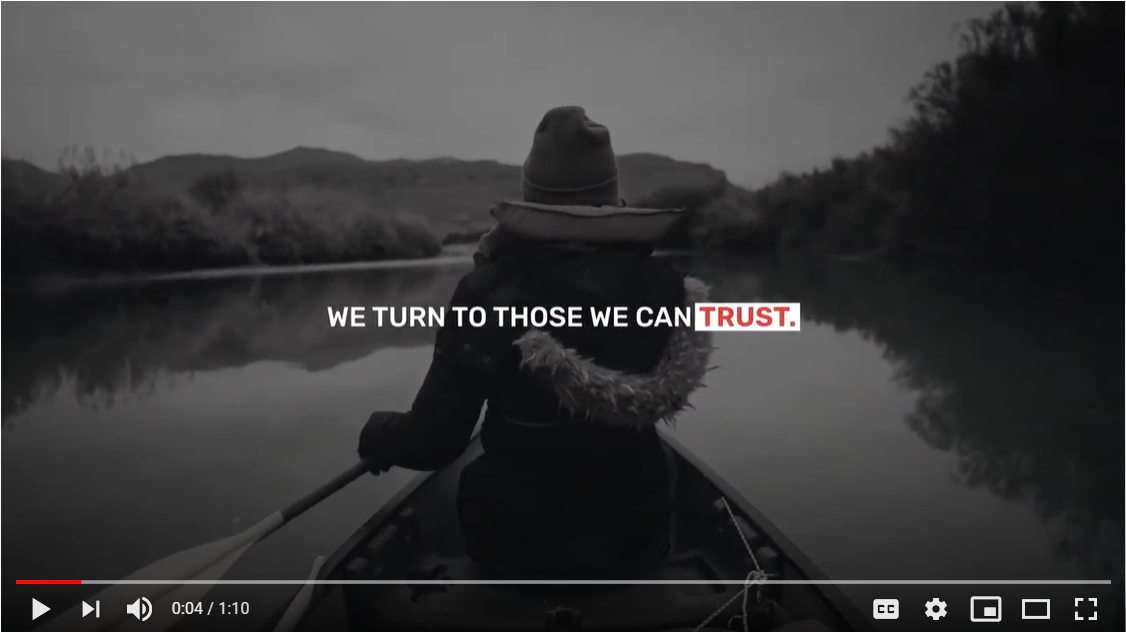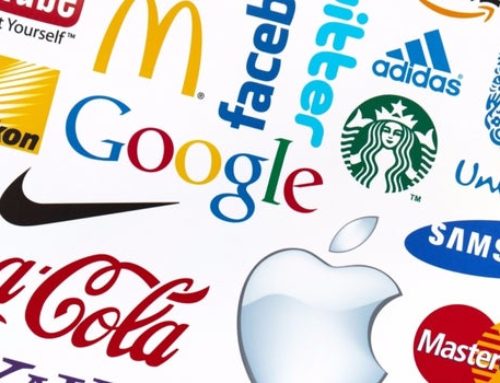Watch the BrightMark video here.
“The most important thing about American Express is the brand and the customers that aspire to be associated with the brand. That brand needs to be cared for, the brand needs to be invested in, and we will continue to do so through tough times and through the good times.”
In this interview with video creator John Fragale, CEO of Levitate in San Francisco, you’ll learn why video has become the new company asset for best conveying your brand, your mission, and your competitive advantage in a digital world. Levitate has produced over 8,500 animated and live videos for companies including Aveeno, Nautilus and Verizon. John shares insights on why video is so essential today, what makes an effective video and how businesses should use videos to create greater value. As John mentions, short videos that entertain and educate are the most effective way to quickly move someone to action. And, they are now affordable, too.
Listen to the full podcast and subscribe wherever you get your podcasts: Apple, Spotify, Stitcher, Google Podcast, Pandora, and TuneIn. The following is edited for length and clarity.
Jane Cavalier: Why do you see video as the new must-have sales and marketing asset in a digital world?
John Fragale: Video is simply the most user-friendly way to rapidly consume information. With a video, someone can just press play, and in one minute be educated and entertained. Done. This is so much easier than downloading a PDF or searching through website pages. Video is a superior way to allow people to know who you are and how you can help them, especially when you are not there to talk to them. Also, many decision makers are younger, tech-savvy and expect video. Video is the ultimate way of leading a prospect into the sales funnel.
Jane: Let’s say I’m talking to a company and they’re a little gun shy about investing in video as they’ve never had one. What would you say are the essentials of creating a powerful video?
John: We pride ourselves on having videos that are accessible to nearly any company. First, define your project. What’s the video topic? Who are you trying to reach? And frankly, what’s the goal of your project? First step is the script. It really serves as the backbone of the video and influences the visuals and flow. The next step is determining what type of animation will resonate best with the target audience. Let’s say it’s a B2C product. Maybe we use a 2D character animation where we show animated characters moving around. Or, which is the most common with B2B companies, we leverage high-end stock video and motion graphic overlays to show real people in the video and have the sizzle of motion graphics without having to set up a custom shoot. It is important to make sure the video matches and plays nice with your brand look and feel.
Jane: One thing I find intriguing is that online video seems to have the power to extend the reach of a company’s narrative. Can you give an example?
John: We’ve been lucky to work with over a thousand companies and one is TeamSnap. They have an app that makes sports team management easy and efficient for everything from youth soccer all the way up to minor league baseball. We’ve produced 15 to 20 videos with them over the last five years. I was on their YouTube page recently and saw that one of the first animated videos we produced for them has over 4 million views. Every video we produce does not get 4 million views, I wish it did, but it speaks to the reach you can achieve with a great video.
Jane: It’s one thing to have a video. It’s another to generate value from it. What are the basics on what to do with a video?
John: First, go in with the idea that you want to get it out to as many places as possible. Upload it to YouTube or Vimeo so people can stream it. Once uploaded, take the embed code and put it on your website, email signature, social media, digital marketing materials and sales letters. Use it at virtual or in-person events, to cue up a sales meeting or presentation. Maybe you have partnerships that will promote it in other places.
Jane: You know John, I see a lot of bad and ugly videos out there. Why does this happen?
John: One of the biggest errors is that people try to produce a video on the cheap. You end up getting a lackluster, underwhelming video. A bad video is probably worse than no video at all. The biggest mistake I see is that companies don’t consider their target audience and what they want. I tell my clients, “Yes, we’re producing the video for you. You own it. But really the video is for your prospect, your existing customer, someone out there who’s your target audience who’s going to watch the video and take a desired action.” That’s the key. You want to think about who’s going to consume it. Another mistake is length. Shorter videos are more effective. The most effective videos are the ones that speak to the target audience, address the problems they might have and show how you can solve them. Then you’ve engaged them. As opposed to just ramming product features down their throat. They don’t care about the product features until they know you can solve their problems.
Jane: You said shorter videos work best. What time length are we talking about?
John: It depends on the project goal. In general, if you can get a video done in a minute, it’s a huge win. You’re going to get more people watching end to end. But, there can be longer videos. We did a video for the American Heart Association about someone who suffered a stroke. It’s a four minute video and I’m hanging on every word, because it’s a tear-jerker and it’s a really emotional story about this woman’s journey. But a product video? Get in and get out and have it focused on converting people. We’re not making art, we’re creating a business asset to make something happen.
Jane: What are the most important elements with online video?
John: There’s a story arc, there’s a climax. One, you have a good story. Two, you have that on-screen text that promotes people to go somewhere. And three, you include it in the voiceover. So, even if someone’s halfway looking at the screen, they’re still hearing it and you’re also showing them on-screen text of what to do next. I really recommend having a script and a voiceover. The other piece that doesn’t get any love that should be talked about is having a good background music track. It’s an engine in the back of the video moving it along and keeping people engaged, and also setting a tone.
Jane: What do you think is the biggest stumbling block preventing companies from using video?
John: The biggest stumbling block I see is budget. Whether it’s a lack of setting aside budget or budget not being available. You really have to prioritize video. I think decision makers and marketers and heads of sales know they need those type of assets. They just haven’t set aside the money or maybe they don’t have an internal team on the marketing side who is advocating for videos to upper management. I think you also see some companies that are stuck in their ways.
Jane: I know you feel strongly about this. What is the distinct advantage for a company in using video online?
John: When I get to a website to research a product, I don’t want to spend too much time there. If they have an above-the-fold video that I can just press play on, and it is a well-produced, in a minute I am informed and entertained. I’m probably more apt to be like, “Okay, these guys are players. I want to talk to them.” If that video buys that company a first call, I think the video did its job. Now, maybe the company doesn’t have video and just has a really well-designed website. Maybe the information is so clear that I can see the similar information that I would have got from a video, but maybe not. Why not stack the deck in your favor? You not only want that great looking website, that’s efficient to navigate, not too text-heavy, got the right imagery – you also want a great video to seal the deal. More often than not, I bet you, people are going to say, “Oh, video. Great.” Because, you can get entertained and educated with the video. That’s the huge advantage, so you stack the deck in your favor.
Jane: Let’s talk a little bit about Levitate for a moment. You’ve been around a long time. You’ve produced thousands of videos. Why do clients like working with your company?
John: Our quality, our value, and the promise of a great customer experience. The proof’s in the pudding. We’ve been blessed that a high percentage of our customers come back for a second, third, or fourth video because of those factors. Say you have a product that costs thousands or tens of thousands of dollars. You produce a video for, say, six grand once and you use it to help you get a couple leads that lead to deals. You’ve already paid for your video and can keep using it. We come in the door as a partner and love what we do. We want to make videos, but we really want to help our clients and develop lifetime relationships. We provide a white-glove customer experience. I know what it’s like when someone treats me right. We want to not only win on video quality, but we want to win on experience. We always have our A game on, so people will continue to come back.
Jane: Thank you John. It is clear how passionate you are, not just about video, but about driving businesses with the use of video.
John: We love what we do. It’s really a lifestyle. I was the first hire at Levitate and I’m now their CEO. It’s a seven day a week type of thing, and we wouldn’t do it if we didn’t love it.
To learn more, reach out to John at [email protected] or go to levitatemedia.com.
Listen to the full podcast and subscribe wherever you get your podcasts: Apple, Spotify, Stitcher, Google Podcast, Pandora, and TuneIn.
FACT FOR THOUGHT
114 million, $1.2 trillion
In 2018, there 114 million American Express cardholders charging about $1.2 trillion in 2018.
Enjoying Overhead Space? There’s More to Love.
Subscribe to Overhead Space to receive mind-expanding editorials and interviews to help your organization reach its full potential.




